CAPITOL REEF (Day 15 - part 5)
I continued along the riverbed.

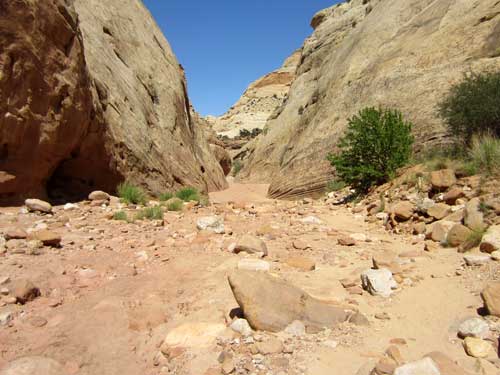
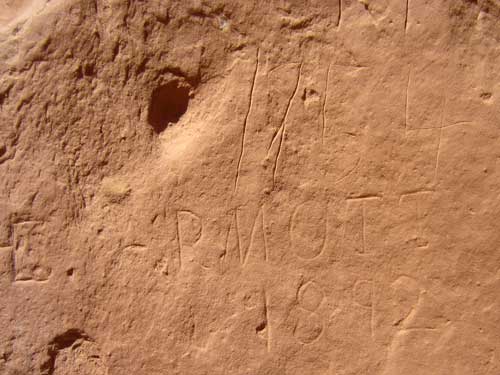
A few more inscriptions, from 1892...

... and 1910.
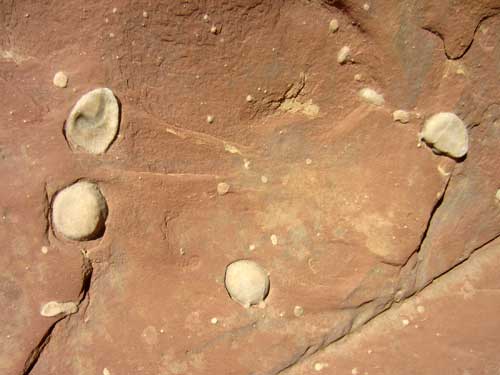
Unlike the concretions from earlier, these are nodules. A nodule is an irregular, bumpy lump composed of a different material (such as dissolved minerals that completely replaced the original sediment). Concretions are usually similar in color to the rock in which they are found, whereas nodules typically have a contrasting composition.





A chipmunk rests in some shade for a meal...

... then darts up a vertical cliff with speed and ease.

I had no idea what "The Tanks" were but they sounded interesting. Besides 0.2 miles wasn't all that far...

... until I realized that this (straight up) was the path!

A cairn lets me know that I'm headed in the right direction.

Looking back down at the riverbed that I was just on mere moments ago. Note the three tiny people.

Where exactly is this taking me?



Eventually I arrived and realized the 'tanks' were simply water-filled potholes. It is these little pockets of water, common throughout the area, that inspired John Wesley Powell in 1872 this giant wrinkle in the earth's crust the name Waterpocket Fold.


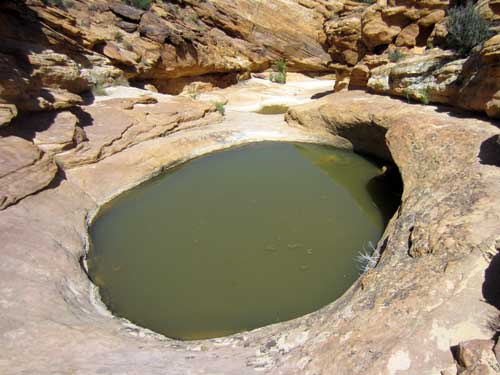
The pools are a source of life for many animals...

... including the spadefoot toad. Eggs laid in the water hatch into tadpoles within days of a rain. Those that reach adulthood before the pools dry up get to repeat the cycle when the pools fill again.


Strange rock patterns

Starting the hike back down


The view from above...

... and standing back down below.
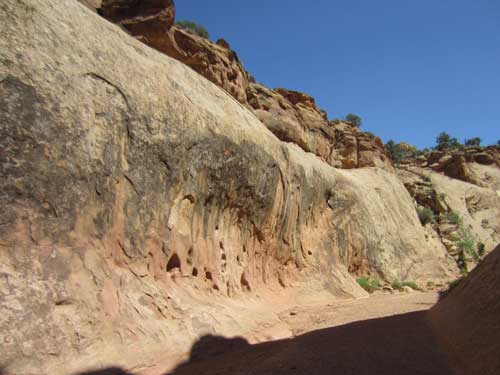

The remains of old telephone lines that once ran through this canyon


The sun heats up...

... to which the cracked, dried ground can attest.


Life can indeed be harsh out here.


Desert varnish (sometimes called rock rust or desert patina) is the coating found on exposed rock surfaces in arid environments. It forms only on physically stable rock surfaces that are no longer subject to frequent precipitation, fracturing or wind abrasion. Originally scientists thought the varnish was made from substances drawn out of the rocks, however, studies show that a major part of varnish is clay, which could only arrive by wind. This clay layer then catches additional substances that chemically react together when the rock reaches high temperatures in the desert sun. It can range from an orange-yellow to black color (depending on the amounts of iron and manganese oxides).

The end is in sight!
I rejoined Bill and Joanne in the car and we bumped back down the dirt road.
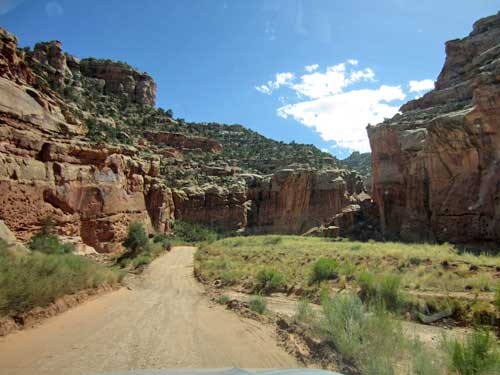

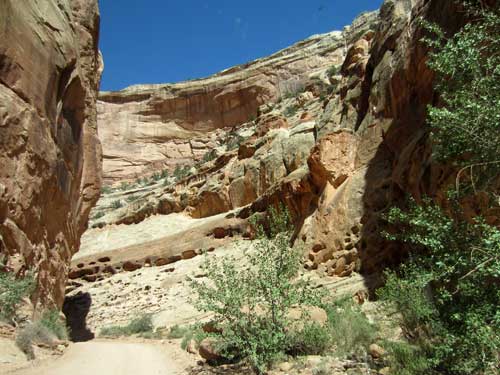

The road was a bit rough in spots!

return • continue

